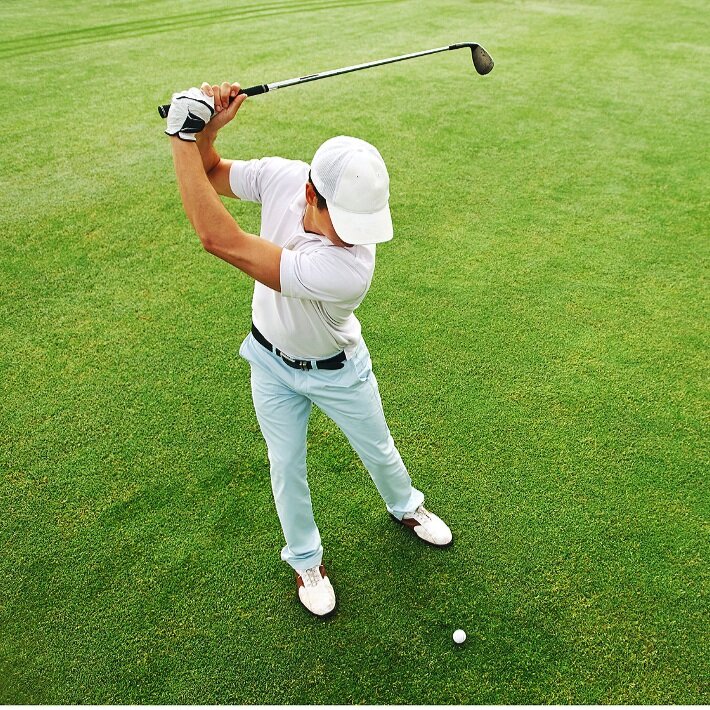How can taking a seemingly effortless stroll and hitting a few balls along the way cause an injury?
This may be your perspective if you have never played a round of golf. But if you have, you realize that even this non contact, low impact sport results in frequent injuries. In fact, this time of year golf injuries are commonly seen in our clinic. . . although hardly ever right away.
Most of the people we know who play golf seem to put up with injuries and just keep playing. They experience aches, pains, and stiffness more than excruciating pain. Most of them don’t want to accept that the injury is in fact a consequence of the sport they love. That is until inevitably they are forced to stop playing.
The problem with golf is that it involves a lot of positions that the body isn’t designed to be in. In addition, the temptation is to hit the ball with as much power as possible to make it go further. These forceful, awkward twisting movements put too much stress on certain parts of the body.
Let’s dive into the 3 most common injuries and what you can do to avoid them.
1. Back Pain
Think about your golf swing. It is a pretty unnatural movement and the reason it takes so long to perfect. Your spine isn’t designed to twist in this way even with the best technique and equipment.
Your back naturally has some rotation, but not the extremes of motion that it does when you are “teeing off”. Unfortunately, this spinal mobility and the ability of it to absorb forces decreases with age making older golfers even more susceptible to injury.
2. Golfers Elbow
A golfers elbow pain is the reverse of tennis elbow. It’s a sharp pain on the inside of your elbow when you grip the club.
This is an over use type injury where the tendons in the elbow are under too much tension. Symptoms of this injury include a stiff elbow, increased pain when making a fist, weakness in the hands or wrist, and possibly tingling down into the fingers.
3. Ankle Injury
A golfers ankle injury is most likely an Achilles tendon problem, where the calf muscle connects to the heel. Injury occurs as you add together the uneven walking surfaces of the golf course and the force on the tendon during your swing.
The point where you’ve hit the ball and propel through your body during the upward motion of the swing puts the highest stress on the Achilles. The result is a tear or inflammation with localized pain, stiffness, or swelling.
All of these injures are more likely to happen as a result of excessive and constant movement, torsion, and gripping such as when you are on the driving range. They are generally over use injuries, even if the pain seems to come on all of a sudden.
So assuming that you’re not going to stop playing – and probably be unable to resist the urge to hit the ball harder.
What can you do to avoid pain while golfing?
The most important thing that any golfer can do to prevent these injuries is to warm up properly. This can even lead to shaving a few strokes off your game. By stretching and warming up prior to playing a round, the body is able to increase blood flow to these key areas of the body.
Warming up prepares the muscles, tendons, and ligaments for the necessary stretching and shortening that happens during your swing. Committing just 5-10 minutes to warm up before any round of golf can significantly lower a player’s chance for injury.
If you feel an injury coming on, have been suffering for some time, or just want to optimize your performance, inquire about how physical therapy can help you meet your goals. A thorough evaluation of your movement, and specific exercises tailored toward the unique physical demands of golf will be the fastest way to get you back on the course.
Fill out a no obligation inquiry and set up a Free call with a specialist at the link below.




